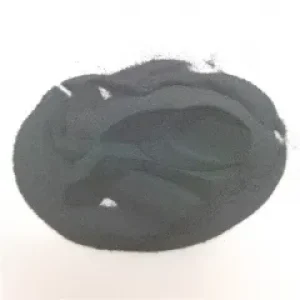Tantalum carbide (TaC) is a refractory ceramic material known for its exceptional hardness, high melting point, and remarkable chemical stability. It is used in various high-performance applications where extreme conditions are prevalent. Here are some key parameters for tantalum carbide:
- Chemical Formula: TaC
- Molecular Weight: Approximately 194.97 g/mol
- Crystal Structure: Tantalum carbide has a rocksalt (NaCl) cubic crystal structure.
- Density: Theoretical density ranges from 14.3 to 14.5 g/cm³, making it one of the heavier carbides.
- Melting Point: It has an extremely high melting point, around 3880°C, which is among the highest for binary compounds.
- Hardness: TaC exhibits a high Vickers hardness, typically in the range of 1800 to 2300 HV, depending on the grain size and purity.
- Young’s Modulus: The Young’s modulus of tantalum carbide is approximately 450 GPa, indicating its stiffness.
- Thermal Conductivity: It possesses good thermal conductivity, usually ranging from 15 to 100 W/(m·K), which aids in heat management.
- Thermal Expansion Coefficient: Tantalum carbide has a low thermal expansion coefficient, typically around 5.5 × 10^-6 /°C, which contributes to its dimensional stability at high temperatures.
- Chemical Stability: TaC is highly resistant to corrosion from most acids, alkalis, and organic solvents, except for hydrofluoric acid and hot, concentrated sulfuric and nitric acids.
- Electrical Conductivity: Although a ceramic, TaC exhibits electrical conductivity due to its free electrons in the conduction band.
- Synthesis: Tantalum carbide is typically synthesized through solid-state reactions of tantalum oxide (Ta2O5) with carbon at high temperatures, often exceeding 1500°C, in a reducing atmosphere.
-
Applications: TaC finds applications in extreme environments such as rocket nozzles, high-temperature structural components, wear-resistant coatings, cutting tools, and as an additive in cemented carbides to improve their performance.
